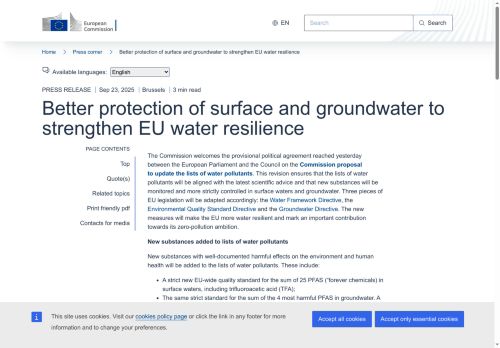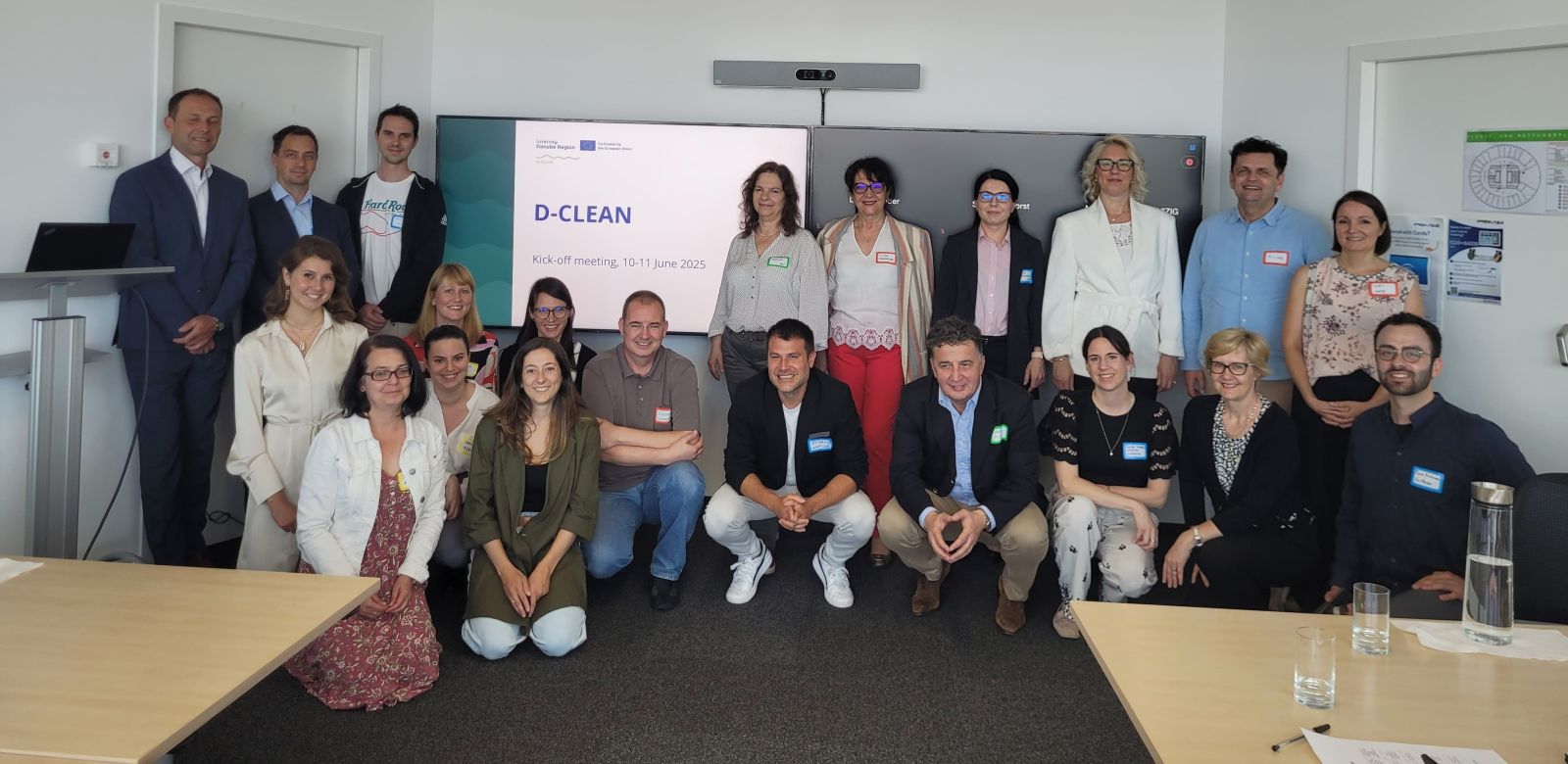
Voice of the Danube
The EU Parliament and Member States have reached an agreement on priority substances in water and corresponding regulatory standards – a document with far-reaching implications.
On 23 September, agreement was reached on a directive to review and update the lists of pollutants affecting surface waters and groundwater. This Water Agreement revises three directives: the Water Framework Directive, the Groundwater Directive, and the Directive establishing environmental quality standards for surface water.
Following the proposals of the Commission's initial draft published in 2022, the text updates environmental quality standards for a number of pollutants and adds new ones, aligning EU water policy with the latest scientific evidence.
The agreement introduces new substances into the priority lists, including pesticides, pharmaceuticals, bisphenols, and per- and polyfluoroalkyl substances (PFAS). Trifluoroacetic acid (TFA), a breakdown product of certain PFAS, will be added to the initially proposed sum of 24 PFAS for surface water.
The document also introduces sum standard of pesticides for surface waters, covering substances already listed as priority substances. Bisphenol-A is designated as a priority hazardous substance. Certain substances no longer relevant at the EU level, such as atrazine, are deselected, while the standards for others are tightened in line with the latest scientific advice.
The Water Agreement both strengthens and streamlines monitoring and reporting obligations for EU member states, to improve the monitoring and transparency of water quality across the EU without placing excessive administrative burdens.
Effect-based monitoring (EBM) will be introduced for surface waters, improving the ability to detect harmful chemical mixtures. EBM is an advanced approach used to assess water quality, focusing not just on specific chemicals but on the overall impact of pollutants on ecosystems and organisms in the water. Instead of just measuring individual chemicals, EBM evaluates how a combination of chemicals affects the environment. In particular a limited and targeted use of EBM will be mandatory for estrogenic substances, during a 2-year period.
To assist member states in developing new methods and monitoring the increased number of priority substances, the agreement provides for the possibility of setting up a joint monitoring facility at EU level. The Commission will assess options for its establishment, financing and functioning. Use of the facility would be voluntary and accessible to all interested member states.
In the trilogue that reached the agreement, states obtained the introduction of two exemptions to the principle of no deterioration of water courses, namely cases of temporary and short-term deterioration, and cases of displacement of contaminated water masses, provided that such displacement does not lead to an increase in overall pollutant concentrations.
The agreement is now ready for formal approval by the European Parliament and the Council of the EU, after which the member states will have to transpose the directive into their national laws by December 21, 2027. The deadline for compliance with the new standards is set for 2039, with deadline extensions to 2045 available under certain conditions.
Press corner | European Commission
The Commission welcomes the provisional political agreement reached yesterday between the European Parliament and the Council on the Commission proposal to update the lists of water pollutants. This r



